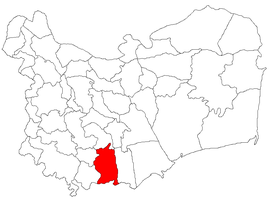
Northern Dobruja is the part of Dobruja within the borders of Romania. It lies between the lower Danube River and the Black Sea, bordered in the south by Southern Dobruja, which is a part of Bulgaria.
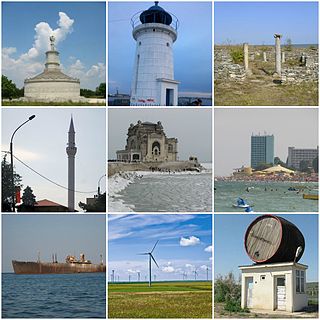
Constanța is a county (județ) of Romania on the border with Bulgaria, in the Dobruja region. Its capital city is also named Constanța.
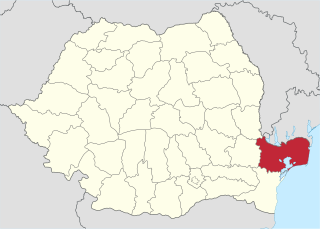
Tulcea County is a county (județ) of Romania, in the historical region Dobruja, with the capital city at Tulcea. It includes in its northeast corner the large and thinly-populated estuary of the Danube.

Tulcea is a city in Northern Dobruja, Romania. It is the administrative center of Tulcea County, and had a population of 65,624 as of 2021. One village, Tudor Vladimirescu, is administered by the city.

Ceamurlia de Jos is a commune in the southeast of Tulcea County, Northern Dobruja, Romania. It has a total population of 2,620 and it has an area of 119,43 km². The Golovița Lake is located south of this commune. Its name is derived from Turkish Çamurlu, meaning "muddy".
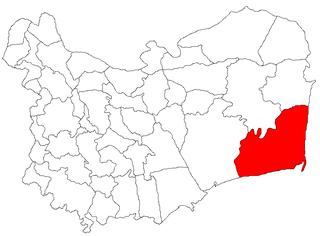
Sfântu Gheorghe is a commune in Tulcea County, Northern Dobruja, Romania. It is located at the end of the southern arm of the Danube near the Black Sea, in the Dobruja region. It is composed of a single village, Sfântu Gheorghe.

Beștepe is a commune in Tulcea County, Northern Dobruja, Romania. Its name comes from Turkish, meaning "five hills/peaks", due to a chain of hills which lie nearby.

Islam in Romania is followed by only 0.3 percent of population, but has 700 years of tradition in Northern Dobruja, a region on the Black Sea coast which was part of the Ottoman Empire for almost five centuries. In present-day Romania, most adherents to Islam belong to the Tatar and Turkish ethnic communities and follow the Sunni doctrine. The Islamic religion is one of the 18 rites awarded state recognition.

The Turks of Romania are ethnic Turks who form an ethnic minority in Romania. According to the 2011 census, there were 27,698 Turks living in the country, forming a minority of some 0.15% of the population. Of these, 81.1% were recorded in the Dobruja region of the country's southeast, near the Black Sea, in the counties of Constanța (21,014) and Tulcea (1,891), with a further 8.5% residing in the national capital Bucharest (2,388).
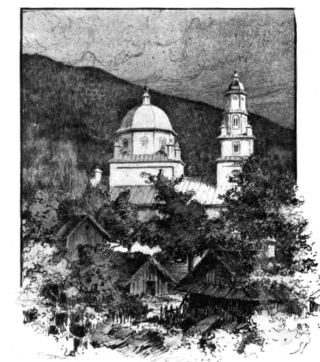
Slava Cercheză is a commune in Tulcea County, Northern Dobruja, Romania. Its name means the Cherkess (Circassian) Slava, in reference to the Dobrujan Circassian community that used to inhabit the village before the Russo-Turkish War (1877–1878). Besides the titular village, the commune also includes the village of Slava Rusă.

Sarichioi is a commune in Tulcea County, Northern Dobruja, Romania. It is composed of five villages: Enisala, Sabangia, Sarichioi, Zebil, and Visterna. Besides the ethnic Romanian majority, the commune is home to a sizeable Lipovan community (43.1%).
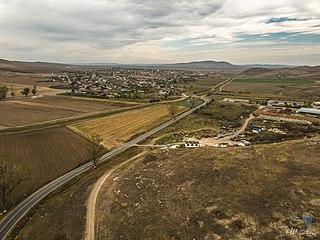
Nalbant is a commune in Tulcea County, Northern Dobruja, Romania. It is composed of three villages: Nalbant, Nicolae Bălcescu and Trestenic.

Mahmudia is a commune in Tulcea County, Northern Dobruja, Romania. It is composed of a single village, Mahmudia. It included the villages of Beștepe, Băltenii de Jos and Băltenii de Sus until 2004, when these were split off to form Beștepe Commune.

Horia is a commune in Tulcea County, Northern Dobruja, Romania. It is composed of three villages: Cloșca, Florești and Horia.

Ciucurova is a commune in Tulcea County, Northern Dobruja, Romania. It is composed of three villages: Atmagea, Ciucurova and Fântâna Mare.

Cerna is a commune in Tulcea County, Northern Dobruja, Romania. It is composed of four villages: Cerna, General Praporgescu, Mircea Vodă, and Traian. The commune is inhabited by a large number of Megleno-Romanians.

Ceatalchioi is a commune in Tulcea County, Northern Dobruja, Romania. It is composed of four villages: Ceatalchioi, Pătlăgeanca, Plauru, and Sălceni.

Casimcea is a commune in Tulcea County, Northern Dobruja, Romania. It is composed of six villages: Casimcea, Cișmeaua Nouă, Corugea, Haidar, Rahman and Războieni.

Beidaud is a commune in Tulcea County, Northern Dobruja, Romania.

The Azizyie Mosque is a mosque located at 2 Independenței Street in Tulcea, Romania, in the Dobruja region.
